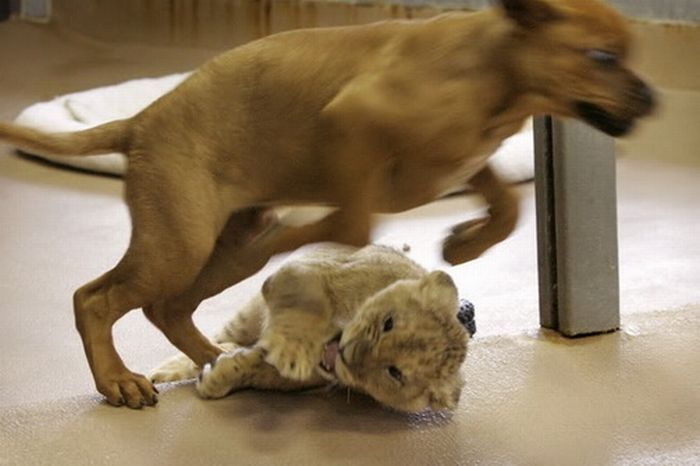|
|
Lion Cub Fighting With Dog
|
Cultural depictions
The lion has been an icon for humanity for thousands of years, appearing in cultures across Europe, Asia, and Africa. Despite incidents of attacks on humans, lions have enjoyed a positive depiction in culture as strong but noble. A common depiction is their representation as "king of the jungle" or "king of beasts"; hence, the lion has been a popular symbol of royalty and stateliness, as well as a symbol of bravery; it is featured in several fables of the sixth century BC Greek storyteller Aesop.
Representations of lions date back 32,000 years; the lion-headed ivory carving from Vogelherd cave in the Swabian Alb in southwestern Germany has been determined to be about 32,000 years old from the Aurignacian culture. Two lions were depicted mating in the Chamber of Felines in 15,000-year-old Paleolithic cave paintings in the Lascaux caves. Cave lions are also depicted in the Chauvet Cave, discovered in 1994; this has been dated at 32,000 years of age, though it may be of similar or younger age to Lascaux.
Ancient Egypt venerated the lioness (the fierce hunter) as their war deities and among those in the Egyptian pantheon are, Bast, Mafdet, Menhit, Pakhet, Sekhmet, Tefnut, and the Sphinx; The Nemean lion was symbolic in Ancient Greece and Rome, represented as the constellation and zodiac sign Leo, and described in mythology, where its skin was borne by the hero Heracles. The lion was a prominent symbol in ancient Mesopotamia (from Sumer up to Assyrian and Babylonian times), where it was strongly associated with kingship. The classic Babylonian lion motif, found as a statue, carved or painted on walls, is often referred to as the striding lion of Babylon. It is in Babylon that the biblical Daniel is said to have been delivered from the lion's den.
|
|









